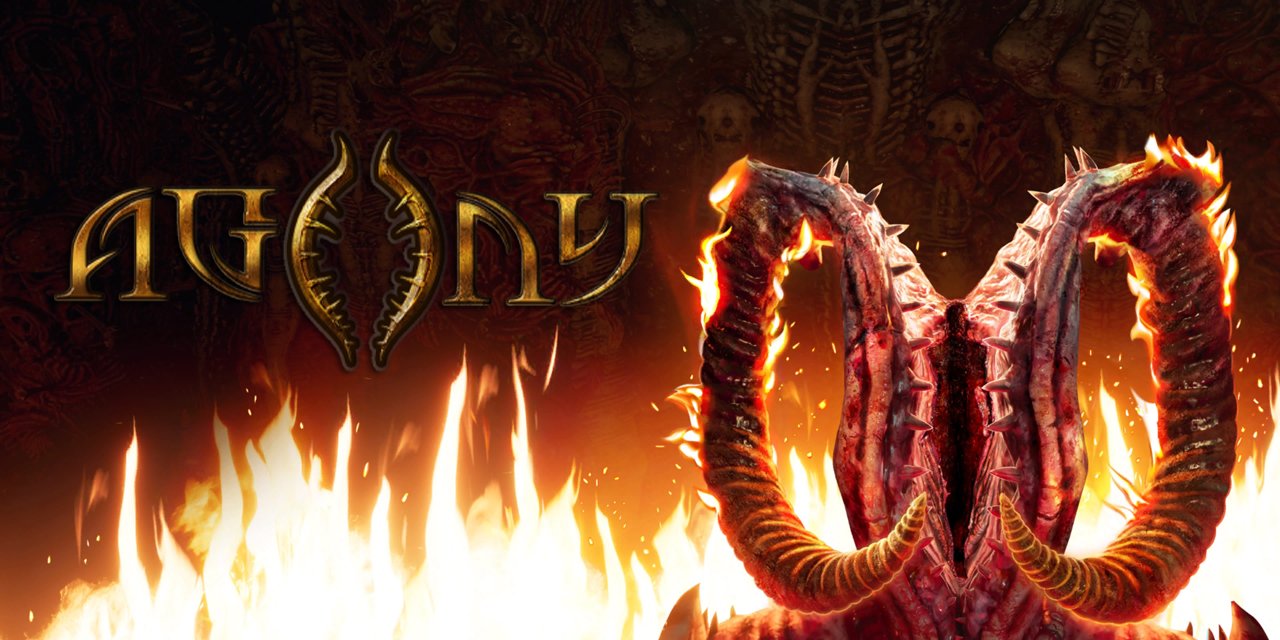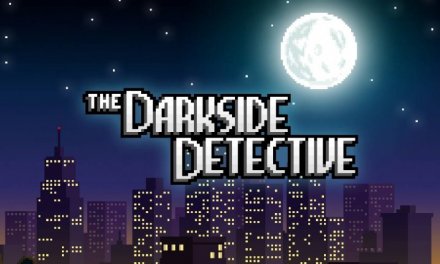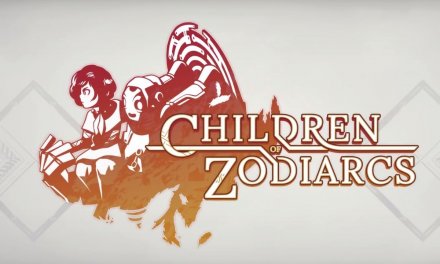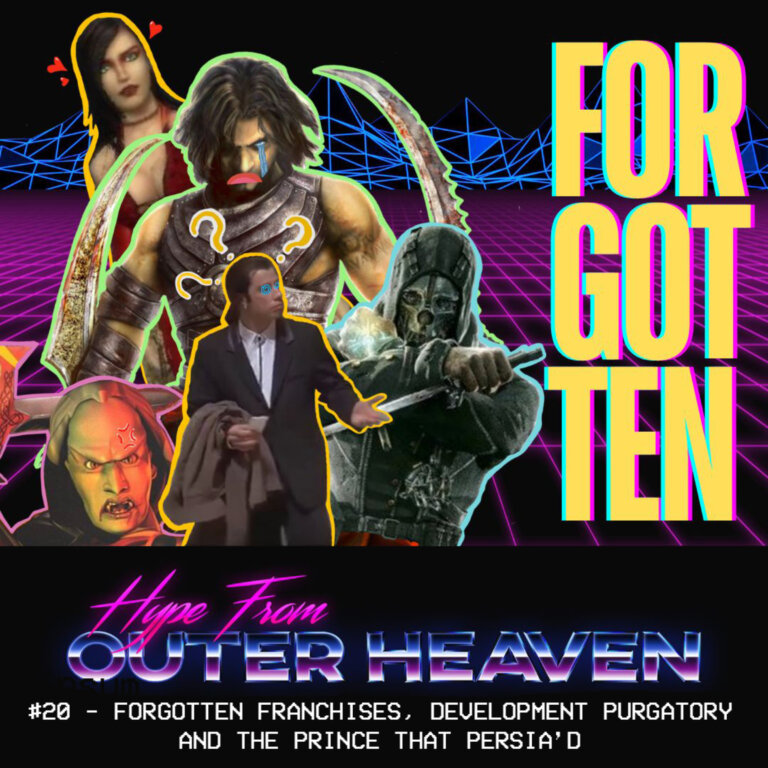“We have eternity to know your flesh…”
Originating on Kickstarter in November 2016, Agony is the twisted brainchild of developer: Madmind Studio and publisher: PlayWay, offering a dark and visceral vision of hell under the guise of a first-person survival horror game. Having reached its funding goal of $180,000 due to 3,926 backers, there was a lot of hype surrounding the game’s May 29th release date, especially as the game was billed to showcase “the most terrifying vision of hell in the history of gaming”. As usual, I’ll be going over the PlayStation 4 version of the game, showcasing the positives, deconstructing the negatives and ultimately discussing whether it’s worth the £34.99 asking price.
Horror is somewhat of a fickle mistress at the best of times; at its peak are some of the most genre-defining movies in cinema (the beautiful aesthetics and haunting atmosphere found in Stanley Kubrick’s 1980 masterpiece The Shining is regarded by many as one of the best horror movies ever made) while in its lowest form are some absolute train-wrecks that would make Lucifer himself cringe inwards through his own spine (Killer Klowns from Outer Space, anyone?). While Don Coscarelli’s Phantasm (1979) remains one of (if not) my favourite horror movies of all time, the golden age of horror of the late 70’s and 80’s was responsible for a spark of different sub-genres within horror itself, leading the creative minds of horror’s best (John Carpenter, Wes Craven, Clive Barker etc.) to create some truly horrific and downright terrifying moments in cinema that would go on to haunt the minds of its audience for the decades that followed. Terrifying your audience is the key to any successful horror venture, be it a movie, book or even a video game; this is exactly what Polish developer: Madmind Studio attempted to do (and failed somewhat) with their first foray as an independent studio: Agony.
Agony places you in the (corporeal) shoes of a unnamed tortured soul, sent to the depths of hell itself (probably for saying Killer Klowns from Outer Space was a good film) leaving you to explore every option possible to escape, following only incomplete visions of a being known as the ‘Red Goddess’. In terms of its general aesthetics Agony definitely studied at the Clive Barker school of horror, with Madmind’s depiction of hell is a twisted form of anatomy and general viscera, complete with the horrifying moans and shrieks of pain that those familiar with Hellraiser (1987) will be wholeheartedly accustomed to (flesh hooks, anyone?). Most of the game’s environments are littered with both the remains of humans and demons, intertwined grotesquely with the walls of Hell that are made up of living tissue and other body parts (the corridor archways made from human teeth are a special kind of disturbing). While the game is very much steeped in the tried-and-tested tropes of a horror movie, as well as the overall attention to making the player feel as uncomfortable as possible being completely on-point, Agony is probably one of the least scary horror games that I’ve ever played (possibly only second to Dying Reborn) and no one is more disappointed with that fact than myself, because the general look and atmosphere found in Agony’s version of Hell has so much potential to be downright terrifying.
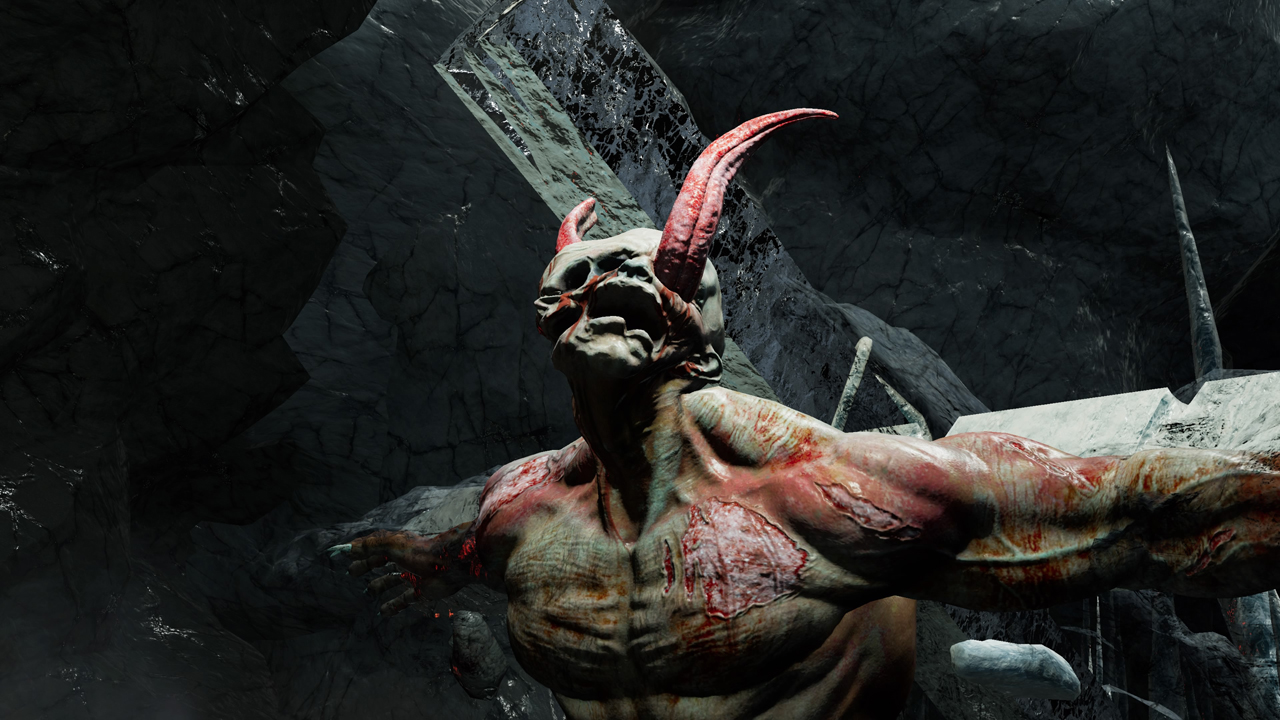
Long live the new flesh: Agony’s visceral depiction of Hell excels at making the player feel tense and uneasy, however, the bulk of it just isn’t scary, when it quite easily could be.
In terms of gameplay, Agony is played from a first-person perspective much like other games of its ilk such as Outlast and Amnesia (only significantly less scary) placing an emphasis on avoiding confrontations and hiding where possible, while simultaneously navigating through the games visceral environments that each have their own distinct atmosphere. The game runs primarily through stealth, learning the game’s environments while avoiding demons and solving puzzles to progress through to the next area (how many heart/weighing scale puzzles does this game need guys?). The best aspect by far within Agony’s gameplay is what happens when you die, with your soul leaving your husk of a corpse allowing you to possess not only other humans but demons too, all of which come with their own cast of abilities and combat skills, giving the game a well-needed facelift in the mid to late stages of the main campaign. While the narrative can take anywhere between 10-15 hours to complete, there is much more time to be spent within Agony chasing all of the game’s collectibles which consist mainly of statues (which unlock concept art and 3D models) secret chambers as well as documents that give you more of an insight into the lore of the game (the story that unfolds over the course of the documents you find is more interesting than the narrative of the main game). The game’s difficulty is also dependent on how hardcore you like your experience; checkpoints, direction-markers, and restarts can all be buffed/de-buffed in the options menu, which is definitely a nice touch for those that like to fine-tune their gaming experience. The game also features a procedurally generated (and never-ending) ‘Agony’ mode, which pits the player through the endless corridors of Hell, coming complete with online leaderboards, allowing exploration to continue far outside the main story (honestly one of the best aspects of the overall experience).
While the gameplay is generally sound and offers some solid moments, it’s bogged down significantly by the general lack of polish and it’s horrendous performance; holding down a sub-par resolution of 810p (it doesn’t bode well with a 3840x2160p screen) with a janky 30fps framerate while simultaneously suffering from screen tears and overlong loading times which really bog down the experience to borderline unplayable at certain points; there are also no HDR or 4K upgrades for the beefier consoles, but as usual this isn’t a make or break situation for everyone. The general quality of the textures are also pretty bad, going from slightly high-res, to downright terrible at a moment’s notice, the game’s voice acting also won’t be winning any awards any time soon (although it’s nowhere near as bad as Resident Evil 1). Probably the most disappointing fact surrounding Agony, however (which was completely out of the developer’s hands) was the fact that the game was heavily censored upon release to avoid the game getting the classification of ‘Adults Only’ (the kiss of death in the gaming industry) restricting the games sale to PC only. It seems there were plans to release Agony: Unrated on Steam, but this has recently been canceled due to financial and legal issues with Madmind Studio (all of the cut content can be seen in the video here).
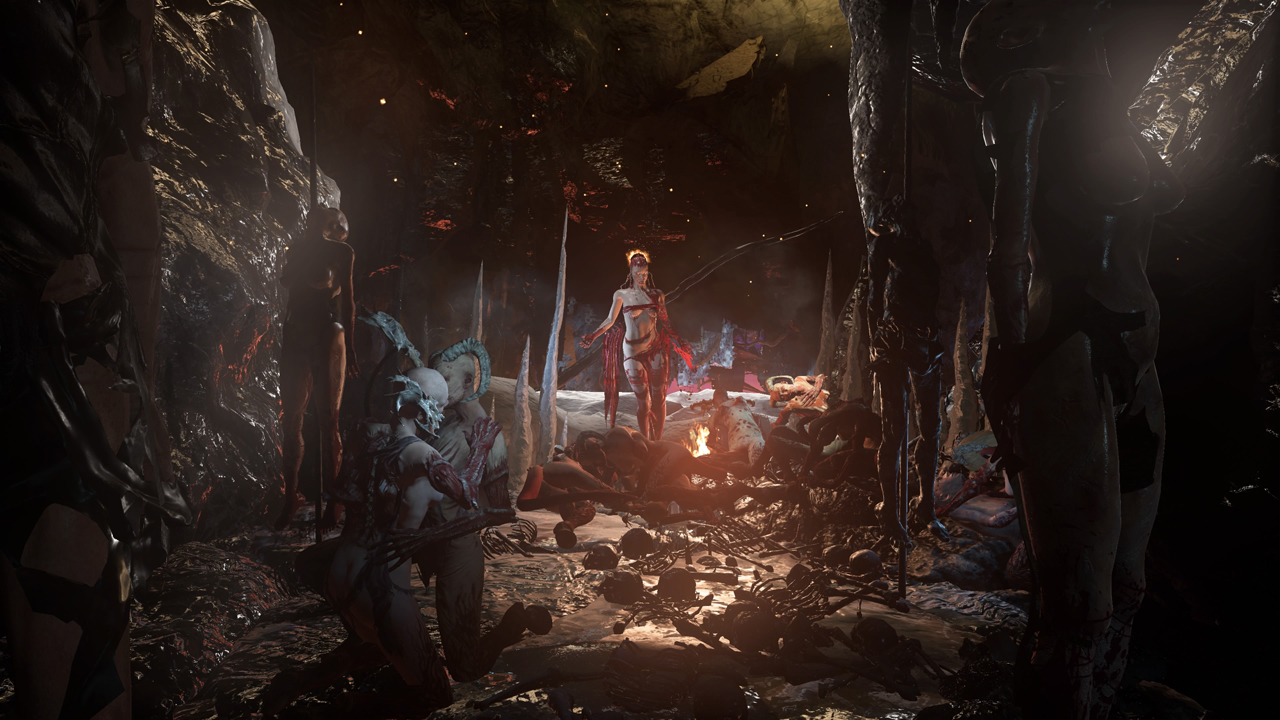
Adults Only: Agony was heavily censored upon release, removing most of its hardcore content to avoid the game’s sale being prohibited to PC only.
Overall it’s pretty hard not to be disappointed with Agony, as the original premise of the ‘most terrifying vision of hell in the history of gaming’ was something that I was wholeheartedly behind 100%, only to be let-down significantly when I got my hands on the final release of the game. The game’s aesthetic vision and art design are by far its strongest selling points, and if they were executed in the correct way, Agony could have been the stuff of nightmares but instead it generally falls flat due to its somewhat goofy and convoluted narrative and general lack of anything particularly scary (shit tonnes of explicit gore doesn’t quite cut it). Definitely, one to avoid in its current state, as there are definitely better horror experiences out there to spend your £34.99 on; like buying a mysterious puzzle box from an unknown shyster like good ol’ Frank Cotton, he never regretted that purchase…(much).
A review copy was provided by Koch Media.

